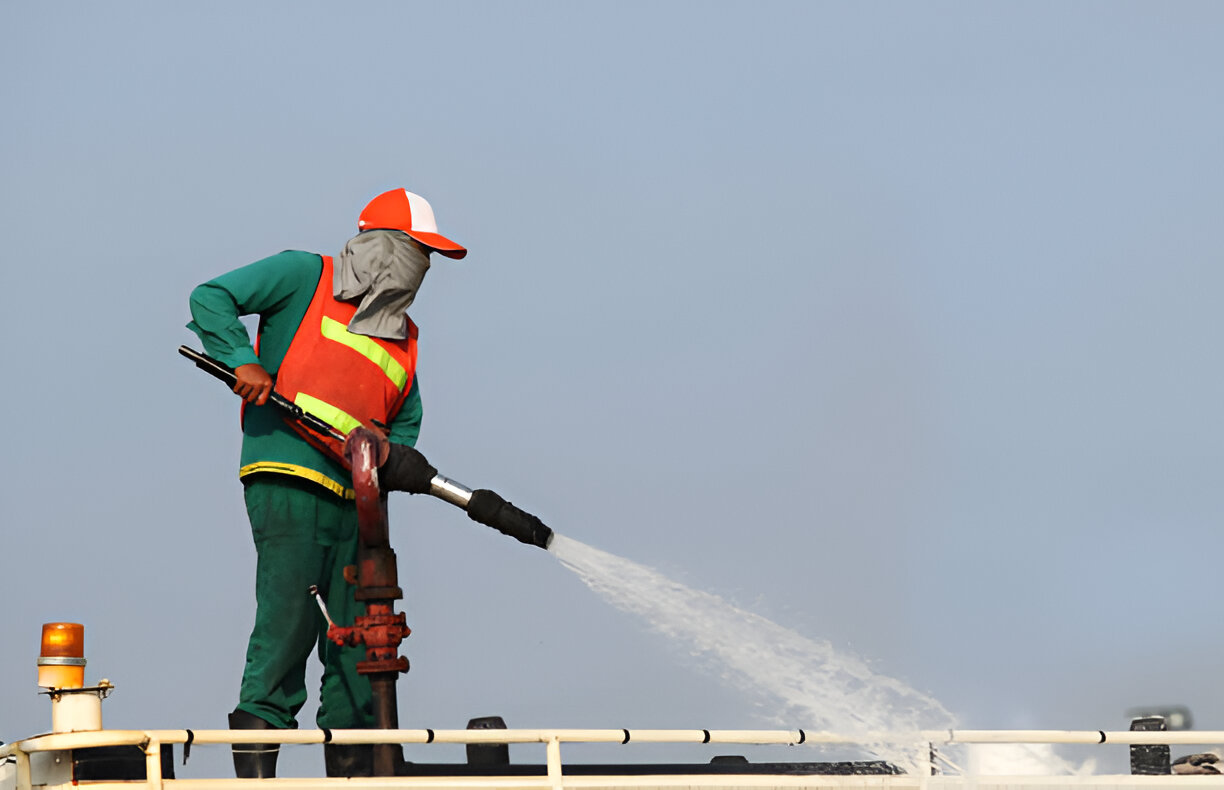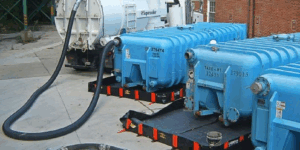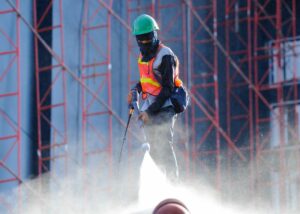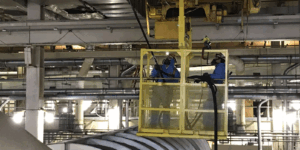
Industrial equipment serves as the backbone of many sectors across the globe, ensuring the smooth functioning of various operations from manufacturing to processing. As these machines operate continuously, they tend to collect debris, scale, and other deposits which can reduce efficiency and lifespan. Hydroblasting emerges as a compelling solution, offering a thorough cleansing of equipment and hence increasing their longevity. This article delves into how hydroblasting works, its benefits, and its transformative role in industrial maintenance.
The Technique of Hydroblasting Explained
Hydroblasting, or water blasting, employs high-pressure water jets to clean surfaces and remove materials such as paint, grime, and biological contaminants. According to the WaterJet Technology Association, the process involves directing water at pressures ranging from 10,000 to 40,000 psi (pounds per square inch) to effectively strip unwanted substances.
One of the significant advantages of hydroblasting is its versatility. It is used in a variety of sectors, including petrochemical, food processing, and power generation, due to its efficiency in cleaning without causing damage to the infrastructure.
The Importance of Effective Equipment Maintenance
In a report by the U.S. Department of Energy, poor maintenance can reduce the efficiency of equipment by 10-20%, directly impacting energy usage and operational costs. For industries that heavily rely on machinery, this efficiency dip translates into substantial financial losses.
Therefore, employing regular maintenance strategies like hydroblasting can prevent the buildup of contaminants that often lead to equipment failure. Regular cleaning aids in maintaining optimal operational efficiency and reduces downtime, leading to significant economic benefits.
Benefits of Hydroblasting in Different Industries
The adaptability of hydroblasting in various industrial applications demonstrates its effectiveness and necessity. Here are some pivotal benefits that hydroblasting offers across industries:
- Improved Efficiency: Cleans the equipment thoroughly, enhancing operational efficiency.
- Extended Lifespan: Reduces wear and tear by removing corrosive agents, effectively extending the lifespan of the machine parts.
- Safety and Environmental Compliance: It is a chemical-free process, making it safer for operators and environmentally friendly compared to other cleaning methods.
| Industry | Common Applications |
| Petrochemical | Pipeline cleaning, descaling |
| Food Processing | Facility and equipment sanitization |
| Power Generation | Removal of slag deposits in boilers |
Hydroblasting vs. Traditional Cleaning Methods
The comparison between hydroblasting and traditional cleaning methods reveals several advantages inherent to hydroblasting techniques:
- Chemical-Free: Hydroblasting often requires only water, whereas traditional methods might use various solvents and degreasers.
- Non-Abrasive: Prevents damage to surfaces that mechanical or abrasive cleaning might cause.
- Quicker Turnaround: The intensity of hydroblasting can reduce cleaning time significantly compared to manual cleaning procedures.
Economic Impact of Adopting Hydroblasting
A study published by MarketsandMarkets projects the hydroblasting market to grow significantly, with industries realizing its cost-saving potential. By reducing downtime and prolonging equipment life, companies note tangible financial benefits.Visit our website to learn more about our industrial services.
Challenges in Implementing Hydroblasting
While hydroblasting offers numerous advantages, it does present certain challenges, including:
- Initial Cost: The initial investment in hydroblasting equipment can be significant. However, ROI is often realized quickly due to operational efficiencies and reduced maintenance costs.
- Training Requirements: Operators need specialized training to handle the equipment effectively, ensuring safety and efficiency.
Case Studies: Successful Hydroblasting Implementation
Several industries have reported successful implementation of hydroblasting:
- Petrochemical Plants: Witnessed a 30% improvement in pipeline efficiency and a marked reduction in maintenance-related shutdowns.
- Power Plants: Noted significant improvements in boiler efficiency post-hydroblasting, contributing to better fuel consumption and reduced emissions.
The Future of Industrial Cleaning Technologies
The future of industrial cleaning lies in adopting more sustainable, efficient methods like hydroblasting. With advancements in technology, equipment is becoming more precise and user-friendly, allowing broader adoption across industries. Environmental regulations are also likely to drive the shift towards non-chemical cleaning technologies.
Why Choose Hydroblasting: A Conclusion
In conclusion, hydroblasting provides a viable, efficient, and environmentally-friendly option for maintaining industrial equipment. While the initial costs and training requirements may seem daunting, the long-term benefits in terms of cost savings, safety, and operational efficiency far outweigh these challenges.
Key Takeaways
Hydroblasting is not just a cleaning method; it’s a strategic maintenance practice that enhances lifespan and efficiency of industrial equipment. Its chemical-free, efficient properties make it a compelling choice for diverse industries globally, ensuring they remain competitive and compliant with evolving environmental standards. As industries shift towards more sustainable practices, hydroblasting will play a pivotal role in the evolution of industrial maintenance.
Frequently Asked Questions (FAQs)
Hydroblasting is a versatile cleaning method utilized across various industries, including petrochemical, food processing, and power generation. In petrochemical industries, it is primarily used for pipeline cleaning and descaling, enhancing the efficiency and reliability of these crucial systems. The food processing industry benefits from hydroblasting through the sanitization of equipment and facilities, ensuring compliance with health standards. Meanwhile, power generation sectors benefit from the method by removing slag deposits in boilers, significantly improving fuel consumption and reducing emissions. The adaptability of hydroblasting to different industry needs demonstrates its broad application and indispensable value in maintaining operational integrity.
Yes, hydroblasting is considered environmentally friendly as it generally requires only water for the cleaning process, eliminating the need for harmful chemicals. This chemical-free approach helps protect the environment and enhances safety for the operators working with the equipment. Facilities that prioritize sustainability benefit enormously from adopting hydroblasting, as it aligns with modern environmental regulations and reduces the ecological footprint of traditional cleaning methods that rely on chemical-solvent interventions. The use of pure water as a cleaning agent allows industries to maintain their equipment without compromising environmental ethics.
The initial investment in hydroblasting equipment may be considerably high, but this is counterbalanced by reduced long-term costs due to enhanced operational efficiency and minimized downtime. Traditional cleaning methods often entail ongoing costs such as chemical purchases, increased labor, and potential equipment repair or replacement prompted by abrasive damage. In contrast, hydroblasting reduces these associated costs by fully relying on high-pressure water jets, ensuring effective cleaning that preserves the equipment’s lifespan. Industries that switch to hydroblasting typically realize substantial financial savings over time, highlighting the cost-effectiveness of this modern approach.
Hydroblasting is suitable for a wide range of machinery and surfaces, provided the machines can withstand high-pressure water jets. Operators need to adjust the pressure levels accordingly, based on the equipment’s material and structure, to prevent damage. While hydroblasting is ideal for heavy industries, care must be taken to ensure that the specific pressure settings are calibrated to suit sensitive components and delicate surfaces. Consulting with hydroblasting professionals or conducting pressure tests on similar materials ensures that the right balance is found, maximizing cleaning efficiency without compromising structural integrity.
Ensuring safety while implementing hydroblasting practices involves comprehensive training for operators to handle high-pressure equipment effectively and responsibly. Operators wear protective gear such as safety goggles, gloves, and durable outerwear to mitigate exposure to high-pressure jets. Additionally, environments where hydroblasting takes place should be secured to prevent unauthorized access, and proper signage must be visible to alert nearby personnel of the cleaning operations. Regular equipment checks and maintenance are also necessary to ensure devices remain in optimal condition, reducing the risk of accidental malfunctions. These safety measures not only protect the operators but also ensure a seamless and productive cleaning process.
For more information, visit Great Lakes Power Vac.






